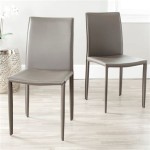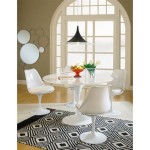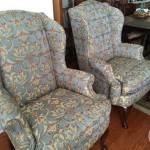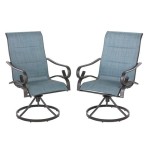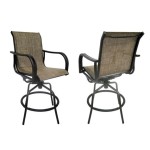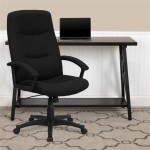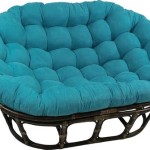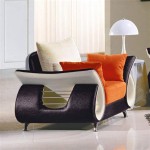Chairs for Desks With Wheels: A Comprehensive Overview
Chairs for desks with wheels, often referred to as office chairs, represent a critical component of ergonomic workspaces. They are designed to promote mobility, support posture, and enhance overall comfort for individuals engaged in desk-based tasks. The selection of an appropriate wheeled desk chair requires careful consideration of various factors, including ergonomic features, build quality, materials, and intended use. This article aims to provide a comprehensive overview of chairs for desks with wheels, exploring their features, benefits, and selection criteria.
The fundamental function of a desk chair with wheels lies in facilitating movement within a workspace without requiring the user to stand up. This is particularly beneficial in environments where individuals need to access different areas of their desk, interact with colleagues, or reach for resources located nearby. The wheels, typically constructed from durable materials like nylon or polyurethane, allow for smooth and effortless gliding across the floor surface, reducing strain and promoting efficiency.
The design of these chairs has evolved significantly over time, progressing from simple, static seats to complex, adjustable ergonomic solutions. Modern chairs for desks with wheels incorporate numerous features aimed at optimizing posture and minimizing the risk of musculoskeletal disorders. These features often include adjustable lumbar support, seat height and depth adjustments, armrest height and angle adjustments, and tilt mechanisms that allow the user to recline slightly and reduce pressure on the spine.
Ergonomic Considerations in Wheeled Desk Chair Design
Ergonomics plays a pivotal role in the design and selection of chairs for desks with wheels. A poorly designed chair can contribute to back pain, neck pain, carpal tunnel syndrome, and other health issues. Therefore, understanding ergonomic principles is essential for choosing a chair that promotes well-being and productivity. The core principles of ergonomic chair design focus on supporting the natural curvature of the spine, promoting proper posture, and distributing weight evenly across the body.
Lumbar support is a key ergonomic feature. It provides support to the lower back, helping to maintain the natural inward curve of the lumbar spine. Adjustable lumbar support allows users to customize the level of support to their individual needs, ensuring optimal comfort and reducing the risk of lower back pain. The lumbar support should ideally be height-adjustable and depth-adjustable to accommodate different body types and postures.
Seat height adjustment is another crucial factor. The ideal seat height allows the user to sit with their feet flat on the floor, knees bent at a 90-degree angle, and thighs parallel to the floor. This position promotes proper circulation and reduces pressure on the hips and back. Most office chairs offer a pneumatic seat height adjustment mechanism, allowing users to easily raise or lower the seat to their desired height.
Seat depth adjustment, often overlooked, is particularly important for individuals with longer or shorter legs. A seat that is too deep can put pressure on the back of the knees, restricting circulation and causing discomfort. A seat that is too shallow may not provide adequate support for the thighs. Adjustable seat depth allows users to customize the seat to their leg length, ensuring optimal comfort and support.
Armrests play a critical role in supporting the arms and shoulders, reducing strain on the neck and upper back. Adjustable armrests allow users to customize the height, width, and angle of the armrests to their individual needs. Ideally, the armrests should be positioned so that the elbows are bent at a 90-degree angle and the shoulders are relaxed. Some chairs also offer adjustable armrest depth, allowing users to position the armrests closer or further away from their body.
Tilt mechanisms allow the user to recline slightly in the chair, reducing pressure on the spine and promoting movement. Dynamic sitting, which involves frequent changes in posture, is believed to be beneficial for spinal health. Different types of tilt mechanisms exist, including synchro-tilt mechanisms, which allow the seat and backrest to tilt in a coordinated manner, and knee-tilt mechanisms, which pivot the chair from a point near the knees. The choice of tilt mechanism depends on individual preferences and the intended use of the chair.
Materials and Construction of Wheeled Desk Chairs
The materials used in the construction of chairs for desks with wheels significantly impact their durability, comfort, and aesthetics. The choice of materials should be carefully considered based on the intended use of the chair, the user's preferences, and the overall design of the workspace.
The frame of the chair is typically constructed from metal, such as steel or aluminum, or from durable plastic. Metal frames offer superior strength and stability, while plastic frames are lighter and more cost-effective. The choice of frame material depends on the intended weight capacity of the chair and the desired level of durability.
The seat and backrest are typically upholstered with fabric, leather, or mesh. Fabric upholstery is generally more breathable than leather and is available in a wide range of colors and textures. Leather upholstery is more durable and easier to clean than fabric, but it can be less breathable and more expensive. Mesh upholstery is highly breathable and provides excellent ventilation, making it a popular choice for warm climates or for individuals who tend to sweat easily.
The cushioning of the seat and backrest is typically made from foam. Different types of foam offer varying levels of comfort and support. High-density foam is more durable and provides better support than low-density foam. Some chairs also incorporate memory foam, which conforms to the shape of the body and provides customized support.
The wheels of the chair are typically made from nylon or polyurethane. Nylon wheels are more durable and less likely to damage hard floors, while polyurethane wheels are softer and provide better traction on carpets. The choice of wheel material depends on the type of flooring in the workspace.
Considerations for Selecting a Chair With Wheels
Selecting the right chair for desks with wheels can be a complex process. Several factors should be taken into consideration to ensure that the chosen chair meets the individual's needs and preferences. These factors include the user's body type, the intended use of the chair, the budget, and the overall design of the workspace.
Body type is a crucial consideration. Individuals with larger or smaller frames may require chairs with specific dimensions and weight capacities. Chairs with adjustable features are particularly beneficial for accommodating a wide range of body types. It is essential to check the chair's specifications to ensure that it is suitable for the user's height and weight.
The intended use of the chair is another important factor. Individuals who spend long hours sitting at their desks may require chairs with more ergonomic features and greater adjustability. Individuals who only use their chairs occasionally may be able to get by with simpler, more basic models. Consider the tasks that will be performed while seated and choose a chair that provides adequate support and comfort for those tasks.
Budget is always a consideration. Chairs for desks with wheels range in price from relatively inexpensive models to high-end ergonomic options. It is important to set a budget and stick to it. However, it is also important to remember that investing in a good quality chair can be a worthwhile investment in long-term health and productivity. Research different brands and models to find the best value for the money.
The overall design of the workspace is also a factor to consider. The chair should complement the existing furniture and décor. Consider the color, style, and size of the chair and choose a model that fits in with the overall aesthetic of the workspace.
When possible, it is recommended to try out different chairs before making a purchase. This allows the user to assess the comfort and adjustability of the chair and to ensure that it is a good fit. Many office supply stores and furniture retailers offer a variety of chairs for desks with wheels that can be tested in person.
Ultimately, the best chair for desks with wheels is one that provides adequate support, promotes good posture, and enhances comfort. By carefully considering the factors outlined in this article, individuals can make informed decisions and choose chairs that contribute to their overall well-being and productivity.

Office Chairs Desk

The 4 Best Office Chairs According To Our Testing Reviews By Wirecutter

Task Chairs With Wheels

12 Best Office Chairs That Aren T Hideous 2025 Ad Tested Architectural Digest

Arista Snow Boucle Desk Chair Adairs

Ergonomic Chairs Stools Humanscale

Arista Snow Boucle Desk Chair Adairs

Office Chairs Modern Desk Task Seating Steelcase
Office Desk Chairs Costco

Official Online Store For Sihoo Ergonomic Chairs Sit Well Think Bet Us
